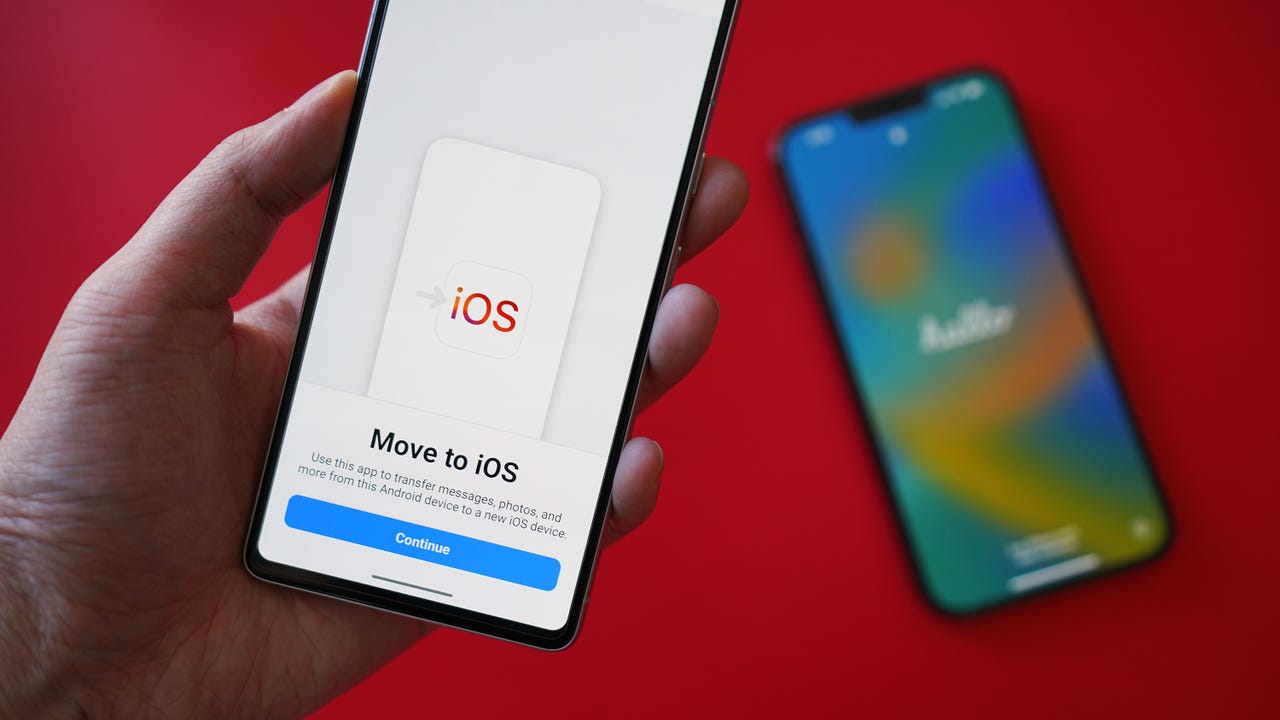































 June Wan/
June Wan/ Whether you just switched from Android to iPhone, or you're planning on it, the big question to ask is how you transfer data from one device to another. Going from an Android phone to another is one thing. Going from Android to iPhone is a whole different beast.
Also: How I recovered 'irreplaceable' photos off an SD card for free
Fortunately, being different doesn't necessarily mean that it's any harder. In fact, I've done it nearly every year, when a new iPhone model comes around and I'm needing to transfer my prized photos, videos, and files across platforms.
Depending on how much data is being moved, the process can range from minutes to an hour plus. But no matter the time, the "how" stays the same, and below I've listed not one but two methods to get all of your data from point A to B, safely and securely.
Before you begin transferring any data, it's always good practice to do the following:
My go-to method for file transferring is Apple's own Move to iOS service. It will be preloaded on your iPhone so all you have to do is download the Move to IOS app on your Android device via the Google Play Store.
Also: Here's how to factory reset your iPhone
In order for the service to work, you'll have to be in the iOS Setup Assistant, which is the startup page when you first turn on your new iPhone -- the one that cycles between "Hello" in different languages. If you've already set up your iPhone and can access the home screen, you'll have to factory reset it to use Move to iOS.
From iOS Setup Assistant, go through the initial setup slides, including Wi-Fi connection, establishing a passcode, and accepting Apple's diagnostics terms and conditions. You'll eventually see anApps & Datascreen.
Then tapContinue.
Agree to Apple's privacy policies, grant the app access to your files and location, and hit Continue when you reach theFind Your Codescreen.
Enter this code on your Android phone. This will initiate the pairing process, after which you'll be able to select what files you'd like to transfer over.
The list includes messages, contacts, calendar info, Google account(s), photos and videos, and user settings.
With the Move to iOS app, the iPhone will generate a one-time code for pairing.
June Wan/Leave the phones alone while the transfer is processing. Depending on how much data you're moving from phone to phone, the transfer can take 30 minutes or more.
Lastly, you can use your Gmail to transfer data via the cloud. This method is ideal if there are any extra files that you forgot to move over during the first method or if you had already set up your iPhone and couldn't use Move to iOS.
Look for the Google tab, tap Backup, and toggle on what categories you'd like to be synced across devices. You can double-check what's being copied by expanding Google Account data in the Backup details list. Wait until the backup sync is completed.
Open up the iPhone's settings > Mail > Accounts > Add Account > and enter your Gmail credentials.
Also: How to easily transfer contacts from Android to iPhone
The data from your Google account should sync with the iPhone and automatically begin importing.
You can also upload files into a Google Drive folder and download them onto your iPhone. Just note that a standard, free Google account comes with 15GB of storage. You'll have to pay up for expanded cloud storage.
No, unfortunately, you cannot use the file-transfer service if you already completed the iOS Setup Assistant. My best advice is to back up anything on your new iPhone that you'd like to keep, factory reset the iPhone, use the Move to iOS service, and then retrieve what was backed up. Again, just make sure you have enough storage to hold everything.
Apple's Move to iOS service is the most seamless and efficient transferring service that I've used, especially when I'm still going through the initial phase of setup. Otherwise, you can also use desktop programs like AnyTrans, connect both phones to a computer, and move files across locally. However, I'm typically against using non-proprietary software when moving personal information, so I'd stick with the two methods above for safety.
Sure. The best method is to back up any information that you'd like to transfer into Gmail or Google Drive and then download it from your iPhone. It requires more manual work, but it's great if you only want to move certain files and not all.
Yes. It's a bit convoluted, and works best if you've perhaps got big files to move. A flash drive such as theSanDisk iXpand Luxe for iPhone and USB Type-C devices is ideal because it will connect to iPhone 14 and earlier that have Lightning ports, and the iPhone 15 and Android devices that have USB-C ports.
 Tags quentes :
Tecnologia
Nosso processo
Smartphones
Tags quentes :
Tecnologia
Nosso processo
Smartphones